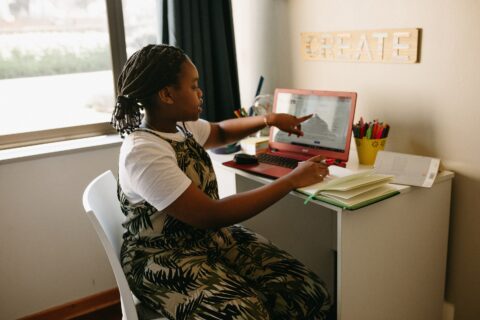The South African Schools Collection PR
8 Ways To Cultivate Creativity In Schools, And At Home
As industries shift towards adaptability and agility, the ability to foster creativity in our young generations becomes an important investment in the workforce of tomorrow.
Mark Anderson, principal, and co-founder of Koa Academy, underscores the pivotal role of creative thinking in today’s fast-paced world: “Education must keep pace with the rate of change we see in the world, and meaningfully reflect and address real-world needs. Adaptability and innovative solutions are already paramount across all fields of human endeavour, and therefore supporting children in developing their creative thinking skills is not just an educational ideal—it is a strategic necessity that will shape the leaders and problem solvers of the next generation. Both educators and parents play a vital role in championing learning and an upbringing that prioritises the cultivation of vital soft skills such as creativity.”
Putting creativity in the spotlight requires a shift in mindset about what creativity is, and how it manifests in the modern world. “Traditionally, we have strongly associated creativity with the arts and with natural talent for artistic undertakings. From the school point of view, this means that the art classroom, the music room, the dance group or the drama club are the only places where creativity is intentionally developed. However, creativity and creative thinking are also critical components of doing Mathematics and Science. These skills are important in accounting and business studies, as well as entrepreneurship education. Alongside, busting creativity out of its narrow confines, is making it clear that creative thinking and creative skills are not innate. As far as we know so far, there’s no gene for creativity. Instead, what the research shows is that creativity is cultivated through experiences and in conducive environments. Therefore, given the right opportunities, all kids can develop creative skills.”
Three ways traditional schooling inhibits creativity
Assessment practices – Traditional tests and exams focus on memorisation, discouraging creative thinking by emphasising a single correct answer. Mark says, “At Koa, we are always looking for ways to enable learners to embrace ambiguity, critical thinking, and problem-solving.
Subject silos – Early specialisation in subjects limits creativity by compartmentalising knowledge. Mark suggests promoting interdisciplinary connections to encourage innovative thinking.
Prioritising hard skills – Traditional education tends to prioritise hard skills over soft skills, such as creativity. “This is a critical shift that needs to happen in the school environment,” Mark says. “Soft skills, including creativity need to be regarded as foundational skills that need to be developed across all subjects.”
8 ways parents and teachers can nurture creativity in children
Creativity exists on a continuum between generating new ideas no one has thought of before and forming new associations by finding different ways to connect existing concepts.
Encourage curiosity – Foster curiosity by asking open-ended questions, engaging in debates, and exploring new knowledge and experiences. Children are born curious, yet along the path of growing up, many adults lose their sense of curiosity. Mark believes that adults rekindling their curiosity about the world can positively impact children.
Embrace boredom – Allow children the space to think creatively by resisting the urge to provide instant stimulation. Boredom can be a catalyst for imaginative thinking and problem-solving.
Solve problems creatively – Teach children to break down complex problems into manageable parts and creatively solve them one step at a time.
Nurture passions – Support and encourage children’s interests. As they independently explore the things they are passionate about they have many opportunities to develop the soft skills associated with creativity.
Reframe failure – Shift the perspective on failure from an obstacle or shameful endpoint to an invigorating opportunity for reflection and growth.
Engineer the environment – Create conducive physical spaces that enhance creativity through natural light, controlled sound, and flexible, personalised tools.
Intentional discipline – Structure time for creative thinking or play, treating creativity as a muscle that benefits from intentional exercise.
Seek diversity – Exposure to diverse experiences helps individuals see things from different perspectives, fostering new associations and connections.
Discover Koa Academy, visit www.koacademy.com.






 Sign-up and receive the Business Media MAGS newsletter OR SA Mining newsletter straight to your inbox.
Sign-up and receive the Business Media MAGS newsletter OR SA Mining newsletter straight to your inbox.